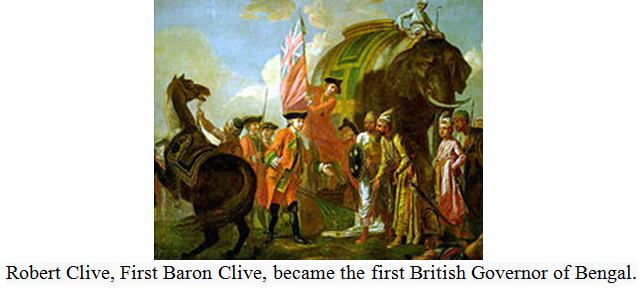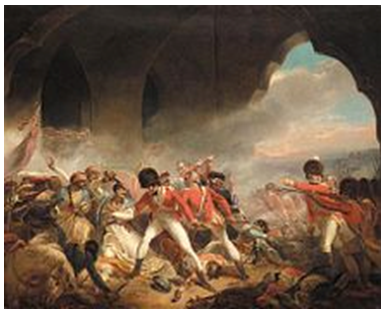
The Company Rule Expands
From Trade to Territory of Class 8
- The company rarely launched a direct military attack on an unknown territory. instead, it used a variety of political, economic, and diplomatic methods to extend its influence before annexing an Indian kingdom.
- After the Battle of Buxar (1764), the Company appointed Residents in Indian states. They were political or commercial agents and their job was to serve and fulfill the interests of the company. Through the Residents, the company began interfering in the internal affairs of Indian states.
- Sometimes the company forced the states into a " subsidiary alliance" According to the terms of this alliance, Indian rulers were not allowed to have their independent armed forces. They were to be protected by the Company, but had to pay for the " subsidiary forces" that the Company was supposed to maintain for this protection. If the Indian rulers failed to make the payment, then part of their territory was taken away as penalty. The Nawab of Awadh was forced to give over half of his territory to the Company in 1801, as he failed to pay for the "subsidiary forces". Hyderabad was also forced to cede territories on similar grounds.

TIPU SULTAN - THE "TIGER OF MYSORE"
In 1760 Hyder Ali, the General of the Mysore Army became the king of Mysore and ruled up to 1782. After his death, his son Tipu Sultan ruled from 1782 to 1799. He controlled the profitable trade of the Malabar coast where the Company purchased pepper and cardamom.
In 1785 Tipu Sultan stopped the export of sandalwood, pepper, and cardamom through the ports of his kingdom, and disallowed local merchants from trading with the Company. He also established a close relationship with the French in India and modernized his army with their help.
There were mainly three reasons for Anglo-Mysore conflict:
- The friendly relations between Tipu and the French and the modernization of his army with their help.
- Restriction on sandalwood, cardamom, spice, and pepper trade for British on Malabar Coast by Tipu Sultan.
- The British saw Hyder and Tipu as ambitious, arrogant, and dangerous - rulers who had to be controlled and crushed.
Due to these factors, the British were furious. Four wars were fought with Mysore (1767-69, 1780-84, 1790-92, and 1799). The Company forces were defeated by Hyder Ali and Tipu Sultan in several battles. Only in the last - the Battle of Seringapatam - did the company ultimately win a victory. Tipu Sultan was killed, Mysore was placed under the former ruling dynasty of the Wadeyars and a Subsidiary alliance was imposed on the state.

The fall of Tipu Sultan and the Sultanate of Mysore, during the Battle of Seringapatamin the year 1799.
WAR WITH THE MARATHAS
The Marathas were subdued in a series of wars. In the first war that ended in 1782 with the Treaty of Salbai, there was no clear victor. The Second Anglo-Maratha War (1803-05) was fought on different fronts, resulting in the British gaining Orissa and the territories north of the Yamuna river including Agra and Delhi. Finally, the Third Anglo-Maratha War of 1817-19 crushed Maratha power. The Company now had complete control over the territories south of the Vindhyas.
THE CLAIM TO PARAMOUNTCY
- From the early nineteenth century, the Company pursued an aggressive policy of territorial expansion. Under Lord Warren Hastings (Governor-General from 1813 to 1823) a new policy of " Paramountcy" was initiated. Now the Company claimed that its authority was paramount or supreme, hence its power was greater than that of Indian states. This view continued to guide later British policies as well .
- The policy of Paramountcy was continuously challenged. For example, when the British tried to annex the small state of Kitoor (in Karnataka today), Rani Channamma took to arms and led an anti British resistance movement. She was arrested in 1824 and died in prison in 1829. But Rayanna, a poor chowkidar of Sangoli in Kitoor, carried on the resistance. With popular support, he destroyed many British camps and records. He was caught and hanged by the British in 1830.
- In the late 1830s, the Company became worried about Russia. So they wanted to secure their control over the northwest. They fought a prolonged war with Afghanistan between 1838 and 1842 and established indirect rule there. Sind was taken over in 1843. Next in line was Punjab. After the death of Maharaja Ranjit Singh in 1839, two prolonged wars were fought with the Sikh kingdom. Ultimately, in 1849, Punjab was annexed.







